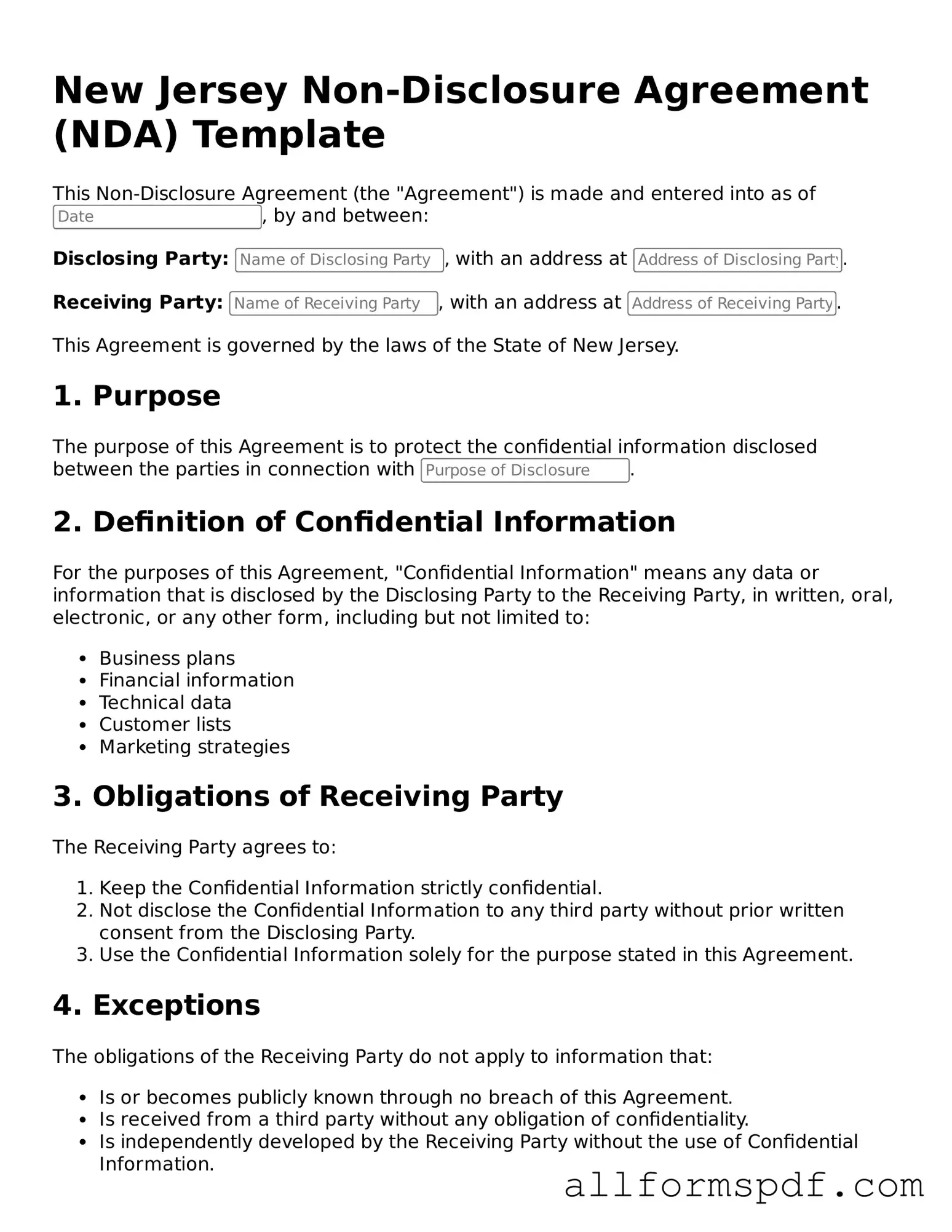Fillable Non-disclosure Agreement Form for New Jersey
A New Jersey Non-disclosure Agreement (NDA) is a legal document that protects confidential information shared between parties. This form ensures that sensitive data remains private and is not disclosed to unauthorized individuals. Understanding its components is essential for anyone looking to safeguard their proprietary information in New Jersey.
Create My Non-disclosure Agreement Now
